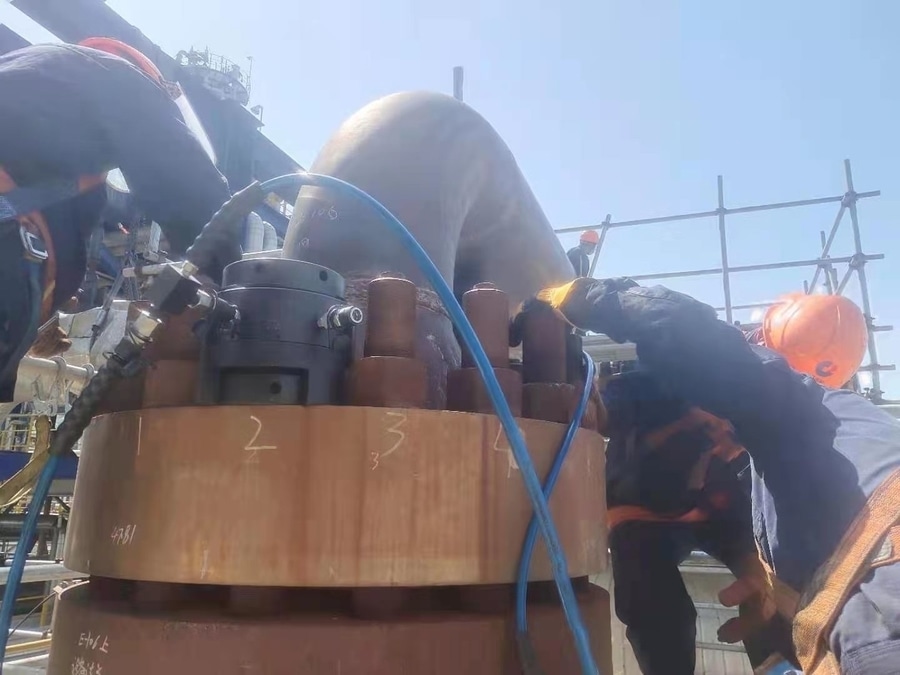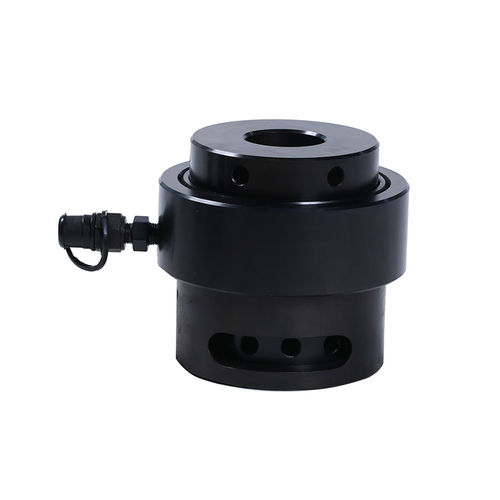
#White Papers
What Is The Difference Between A Hydraulic Bolt Tensioner And A Hydraulic Wrench?
What Is The Difference Between A Hydraulic Bolt Tensioner And A Hydraulic Wrench?
What Is The Difference Between A Hydraulic Bolt Tensioner And A Hydraulic Wrench?
Hydraulic tensioners and hydraulic wrenches are both important tools for pre- tightening and disassembling bolts. They are widely used in construction, maintenance, and emergency repairs in shipping, petrochemical, construction, electric power, mining, metallurgy and other industries. They are a very important tool for the installation and disassembly of large-size bolts. They can not only reduce labor intensity and improve work efficiency, but also greatly improve installation quality, and are also conducive to site safety and work efficiency management.
The Working Principle Of Hydraulic Tensioner
The working principle of the hydraulic tensioner is to use the hydraulic cylinder to directly apply external force to the bolt, so that the applied bolt is elongated in its elastic deformation zone, and the bolt diameter is slightly deformed, so that the nut is easy to loosen. When the bolt is stretched, the nut will separate from the flange contact surface, and there is an opening at the lower end of the hydraulic tensioner for the operator to manually turn the nut. Normally, the rotation of the nut is achieved by turning a dial outside the hexagonal nut with a metal rocker (or directly turning the round head nut).
After the oil pressure in the hydraulic tensioner is removed, the nut and the joint surface are in close contact, so that the axial deformation of the bolt is locked, that is, the remaining bolt load is locked in the nut.
The load applied by the hydraulic tensioner to the bolt is proportional to the oil pressure in the hydraulic cylinder. This design can accurately retain the effective load. Since the load is directly applied to the bolt, and all the forces are used for bolt elongation, the space required for load generation can be minimized. Since the stretching method is not affected by the bolt lubrication effect and the thread friction, a more accurate bolt load can be obtained.
The hydraulic tensioner can use an ultra-high pressure manual pump or an ultra-high pressure electric pump to provide the pressure.
The Scope Of Application Of Hydraulic Tensioner:
According to the principle of use of hydraulic tensioner (tension acting on the stud), the shear force of the thread on the stud is required to provide the tension, so it is suitable for fastening the flange with a longer bolt (the stud is 40-50mm beyond the nut. Depending on the height of the supporting bridge, it may even exceed 50mm).
Since the hydraulic tensioner has a support bridge (or called a support ring), the height of its nut should also be lower than the height of the hydraulic tensioner’s support bridge, and a distance not less than the stretched length should be left.
The Working Principle Of Hydraulic Wrench:
Hydraulic wrenches are powered by hydraulic pressure, and are divided into drive hydraulic wrenches and hollow hydraulic wrenches, which can provide large torque output. It is often used to tighten and loosen bolts. The hydraulic torque wrench is composed of a working head, a hydraulic pump and a high-pressure hose. Through the high-pressure hose, the hydraulic pump transmits power to the working head, and drives the working head to rotate to tighten or loosen the nut. The drive hydraulic torque wrench is used with standard sockets. It is a general-purpose hydraulic wrench with a wide range of applications. The hollow hydraulic wrench has a thinner thickness, which is especially suitable for places with relatively small spaces.
The hydraulic wrench is usually powered by an electric hydraulic pump station, and the two are connected by a high-pressure hose. According to the different structure of the working pump station, most of the new hydraulic torque wrenches can also use multiple working heads to simultaneously tighten multiple bolts, improve the tightening efficiency and minimize the bolt torque value distribution error.
A hydraulic wrench is matched with a variety of specification conversion sockets which can solve the fastening and disassembly of multiple specifications of bolts.
Summarize
In short, the hydraulic wrench tightens the bolts to make the bolts produce axial pre-tightening force. The bolt tensioner is like a hollow hydraulic cylinder, which directly pulls the bolt. When the tension reaches the pre-tightening force you require, use a 300 mm long lever to lock the nut, and the tensioner releases the pressure to complete the tightening. Therefore, the use of a tensioner is the result control, and the use of a hydraulic wrench is the process control. However, if the tensioner is not specifically designated, it is recommended to choose a hydraulic wrench, which is more convenient to use and more efficient.
For example, the tightening of the bolts on the flange needs to start from the opposite corner, so multiple bolt tensioners can be used at the same time to directly stretch the diagonal bolts. Because the same hydraulic pump is used to provide power, the pulling force is the same, so for the fastening of the flange, the bolt tensioner will be the best choice.
In many cases, if you need to work in a small space, the flexibility of the hydraulic wrench can help you complete the project faster and improve work efficiency.
Both bolt tensioners and hydraulic wrenches are tools for disassembling or tightening bolts. As for which tool to choose in the end, it needs to be selected according to the actual working conditions. In many cases, the most suitable tool may not be the best choice.




